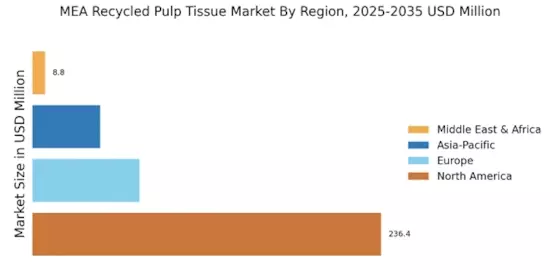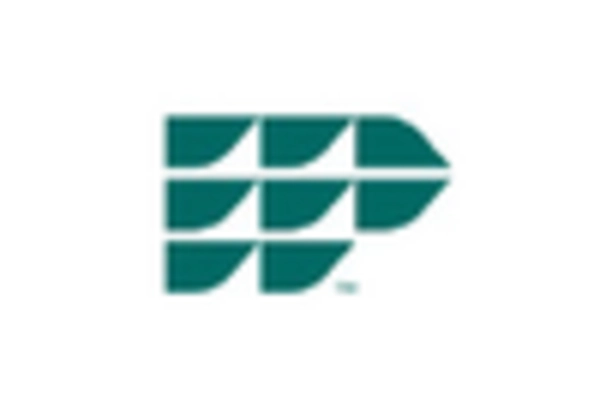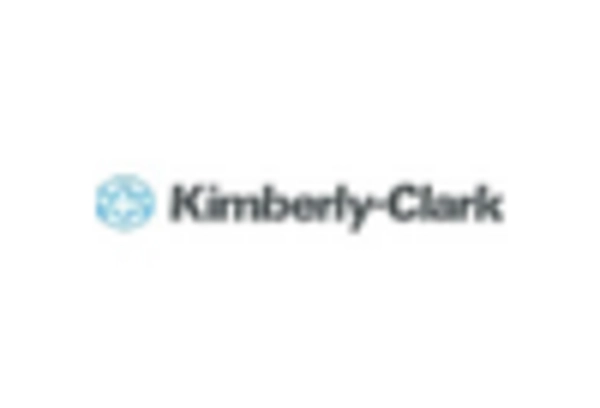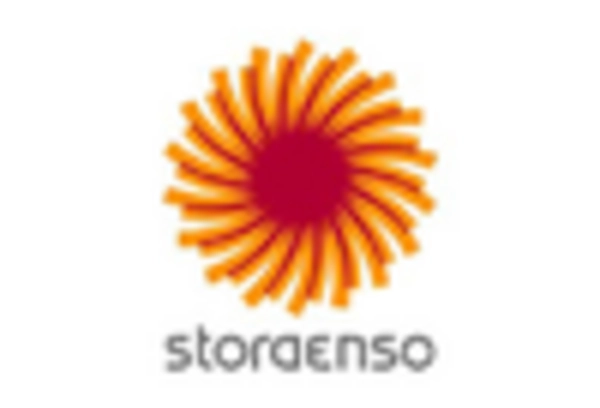Economic Factors
Economic factors are significantly influencing the MEA Recycled Pulp Tissue Market. The region's economic growth, coupled with increasing disposable incomes, is driving demand for tissue products, including those made from recycled pulp. As consumers have more purchasing power, they are more likely to invest in sustainable products, which is beneficial for the market. Additionally, fluctuations in raw material prices can impact production costs, making recycled pulp an attractive alternative. In 2025, the market is expected to capitalize on these economic trends, as businesses seek to balance cost-effectiveness with sustainability. This dynamic environment presents opportunities for growth within the MEA Recycled Pulp Tissue Market, as companies adapt to changing economic conditions.
Regulatory Support
Regulatory frameworks are playing a crucial role in shaping the MEA Recycled Pulp Tissue Market. Governments across the region are implementing policies that encourage the use of recycled materials and promote waste reduction. For instance, several countries have introduced incentives for companies that utilize recycled pulp in their production processes. This regulatory support is expected to bolster the market, as it aligns with global sustainability goals. In 2025, the market is anticipated to benefit from these favorable regulations, which could lead to an increase in the adoption of recycled pulp tissue products. Furthermore, compliance with these regulations may enhance the competitive edge of companies within the MEA Recycled Pulp Tissue Market, as they position themselves as leaders in sustainability.
Technological Innovations
Technological advancements are significantly influencing the MEA Recycled Pulp Tissue Market. Innovations in recycling processes and production technologies are enhancing the efficiency and quality of recycled pulp tissue products. For example, the introduction of advanced pulping techniques has improved the yield and reduced the energy consumption associated with recycling. As a result, manufacturers are better equipped to meet the growing demand for high-quality recycled tissue products. In 2025, the market is expected to witness a surge in the adoption of these technologies, which could lead to cost reductions and improved product offerings. This technological evolution not only supports sustainability efforts but also positions the MEA Recycled Pulp Tissue Market for robust growth.
Changing Consumer Behavior
The MEA Recycled Pulp Tissue Market is being shaped by changing consumer behavior, particularly a growing preference for sustainable and eco-friendly products. Consumers are increasingly aware of the environmental impact of their purchasing decisions, leading to a shift towards products made from recycled materials. This trend is reflected in market data, which indicates that sales of recycled pulp tissue products have risen by approximately 7% in the past year. As consumers prioritize sustainability, companies within the MEA Recycled Pulp Tissue Market are adapting their product lines to meet these evolving preferences. This shift not only drives demand but also encourages innovation in product development, as manufacturers strive to create offerings that resonate with environmentally conscious consumers.
Sustainability Initiatives
The MEA Recycled Pulp Tissue Market is experiencing a notable shift towards sustainability initiatives. Governments and organizations are increasingly prioritizing eco-friendly practices, which has led to a rise in demand for recycled pulp tissue products. This trend is driven by heightened awareness of environmental issues, such as deforestation and waste management. In 2025, the market is projected to grow at a compound annual growth rate of approximately 5.2%, reflecting the increasing consumer preference for sustainable products. Companies are investing in sustainable sourcing and production methods, which not only meet regulatory requirements but also appeal to environmentally conscious consumers. As a result, the MEA Recycled Pulp Tissue Market is likely to see a surge in innovation and product development aimed at enhancing sustainability.


















Leave a Comment